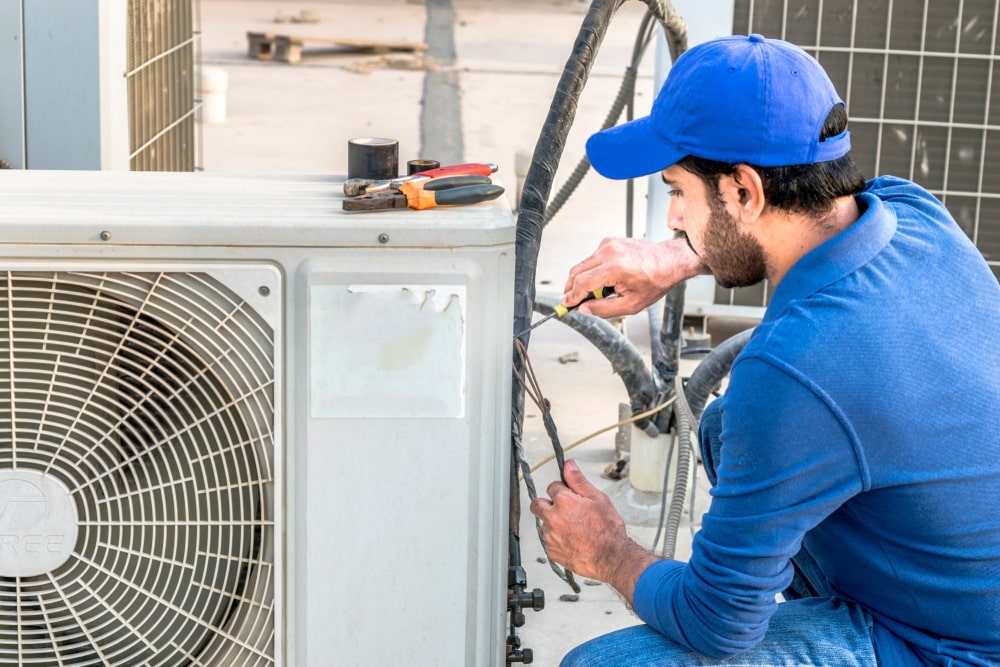Within the contemporary society, where metropolitan living spaces are becoming increasingly compact, discovering efficient HVAC options for compact apartments has become a must. Knowing what HVAC functions and how operates can enable tenants and property owners alike to make informed decisions about their heating and air conditioning needs. With the suitable advice, small apartment dwellers can optimize their comfort while also lowering utility bills and improving in-house air quality.
An effective HVAC system is crucial in keeping a comfortable living atmosphere, notably in tiny spaces that often encounter particular difficulties. From frequent issues that might happen to maintenance tips for keeping a system functioning well, this manual will offer valuable information tailored for those staying in cozy areas. If you are considering a fresh system or looking to improve your existing setup, learning how to select the suitable HVAC system can make all the change in your small apartment.
Understanding HVAC Configurations

HVAC is an abbreviation for Heating, Ventilation, and Air Conditioning, which are essential components in maintaining the comfort and air quality of indoor spaces. These systems are developed to manage temperature, humidity, and air circulation, providing a pleasant environment throughout the calendar year. Whether it's keeping your apartment warm in the winter or cool in the summer, comprehending how HVAC systems work is crucial for making informed decisions that affect your living area.
At the core of an HVAC system are three major functions: heating, ventilation, and air conditioning. Heating systems heat the air, while air conditioning systems cool it back. Ventilation is responsible for the exchange of indoor air with fresh outdoor air, crucial for sustaining good air quality. All component works together to create an efficient and effective climate control system customized to different needs and wants.
For compact apartments, picking the right HVAC system can advance comfort without crowding the space. Options such as ductless mini-split systems or radiant floor heating provide innovative solutions that boost efficiency while reducing footprint. Understanding the multiple HVAC technologies accessible allows residents to opt for systems that not only satisfy their heating and cooling needs but also boost overall comfort and energy efficiency.
Improving HVAC Effectiveness
To boost the efficiency of your HVAC unit, it is essential to start with routine maintenance. This includes changing air screens, cleaning airways, and planning seasonal tune-ups. A tidy system functions more effectively, cutting energy requirement and enhancing air purity. Routine maintenance reviews can spot issues prior to they worsen, guaranteeing your system runs smoothly and extending its working life.
In addition to routine maintenance, look into installing a smart thermostat. Smart thermostats permit for accurate temperature regulation and can adjust to your timing, maximizing energy use throughout the day. By configuring your thermostat to reduce temperatures during the night or when you are absent, you can considerably minimize energy expenditures while maintaining comfort when it is needed most.
Another effective way to enhance HVAC performance is through adequate insulation and sealing. Verify that your space is well insulated, giving special focus to windows, doors, and any areas where air might escape. Sealing openings can halt conditioned air from escaping out and outside air from entering, resulting in a more stable indoor atmosphere and lower energy usage. By combining these approaches, you can achieve significant improvements in HVAC performance and cost reductions.
Cutting-edge HVAC Solutions for Small Spaces
In small apartments, optimizing space efficiency is important, and new HVAC solutions have emerged to meet this need. Mini-split ductless systems stand out as a preferred option, providing both heating and cooling without the need for bulky ductwork. These systems consist of an outdoor compressor and multiple indoor units, allowing residents to manage the temperature of separate rooms. This flexibility not only enhances comfort but also contributes to energy savings, as you can heat or cool only the occupied spaces.
Another cutting-edge solution is the incorporation of connected HVAC technology. Intelligent thermostats enable users to track and adjust their heating and cooling settings from anywhere, adapting from daily habits to optimize energy consumption. By utilizing https://telegra.ph/Key-Signs-Your-HVAC-System-Requires-an-Update-02-28 like geofencing, these devices can automatically adjust temperatures based on whether anyone is home, thus reducing energy bills while maintaining a comfortable living environment. Additionally, many intelligent home systems can be integrated to air purifiers, effectively boosting indoor air quality in limited spaces.
Portable HVAC units are also gaining traction in limited apartments, offering an option for tenants who may not have the ability to install fixed systems. These units come in various forms, including window air conditioner s and portable heat pumps, allowing for easy maneuverability and installation. They provide instant relief from extreme temperatures without requiring major renovations, making them ideal for those renting or those in need of flexible heating and cooling solutions in restricted square footage.
